April 16, 2025 | 16:14 GMT +7
April 16, 2025 | 16:14 GMT +7
Hotline: 0913.378.918
April 16, 2025 | 16:14 GMT +7
Hotline: 0913.378.918
In 2022, Quang Tri Agricultural Extension Center implemented a model of aquaculture in cages at Bao Dai lake in Vinh Khe commune (Vinh Linh district) with a scale of 180m3. The subject of farming is wallago catfish. After more than 4 months of stocking, the fish gained an average weight of 1.2 kg/fish. With the selling price from VND80,000 - 85,000/kg, minus the model cost, the profit is nearly VND90 million.
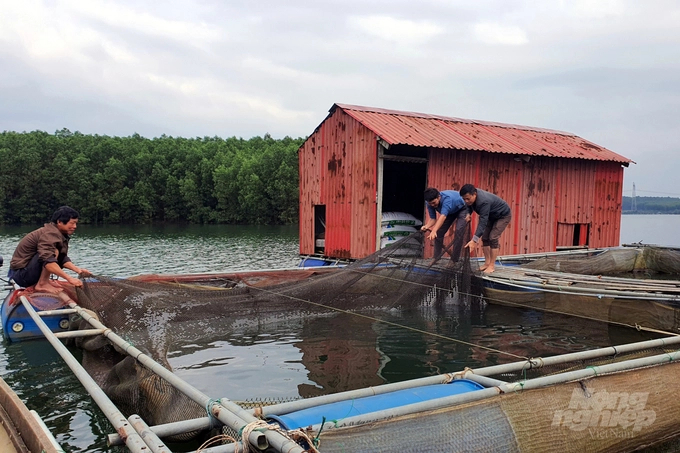
Quang Tri is a province with great potential for developing aquaculture in cages. Photo: Vo Dung.
Mr. Tran Duc Dung, the owner of the household implementing the model, said that the water quality at Bao Dai lake is very good, and the temperature is stable. That is a great advantage for aquaculture households in the direction of creating clean, high-quality products.
Currently, in addition to wallago catfish and traditional cultured species such as carp, grass carp, and red snapper, Mr. Dung also experimented with red-tailed sardines. In the coming time, Mr. Dung plans to increase the number of cages to have a large supply of goods to the market.
In Van Tri village, Hai Phong commune (Hai Lang district), in addition to fishing on the river, for 15 years, the people here have developed aquaculture in cages. The whole village currently has more than 35 cages for raising eels with a number of 200-300 fish/cage. After deducting costs, each cage gives an income of VND100-150 million/year.
Mr. Pham Viet Tin, a household raising eels in Van Tri village, said that on average, he stocked 3-4 fish cages each year. Depending on the size and breed of fish, after 1-1.5 years he will be able to harvest them. In addition, he also stocked some cages of wallago catfish, catfish, and grass carp. From this model, each year Mr. Tin pocketed VND200-300 million.
According to Mr. Tin's experience, to raise fish in cages on the river, farmers need to pay attention to the effects of storms to stock up and harvest at the right time. The most important thing is to always monitor the quality of the water source to have a plan when bad situations occur.
A representative of Hai Lang district's Department of MARD said, in order to take advantage of the potential of the water surface, Hai Lang district has recently had many policies to support people to develop aquaculture in cages on rivers and reservoirs. This includes supporting the cost of making eel cages at the rate of VND3 million/cage.
This locality has also introduced aquatic species with high economic value such as eel, wallago catfish, and snakehead fish into cages to improve economic efficiency for the people. Up to now, the whole district has over 160 cages, including more than 60 cages for raising eels.
Mr. Tran Can, Director of Quang Tri Agricultural Extension Center, said that with more than 125 lakes and dams containing water. In which large dams are an advantage for aquaculture development in general and cage fish farming in particular. However, through the survey, the whole province currently has more than 320 cages for aquaculture of all kinds, but still very few compared to the potential.
In order to promote the development of aquaculture on rivers and reservoirs, along with maintaining the number of existing fish cages, in the coming time, Quang Tri Agricultural Extension Center will continue to deploy fish cage farming models on rivers and reservoirs. This will contribute to Quang Tri effectively exploiting the potential of the water surface, reducing natural exploitation, and protecting the landscape and diversity of aquatic ecosystems.
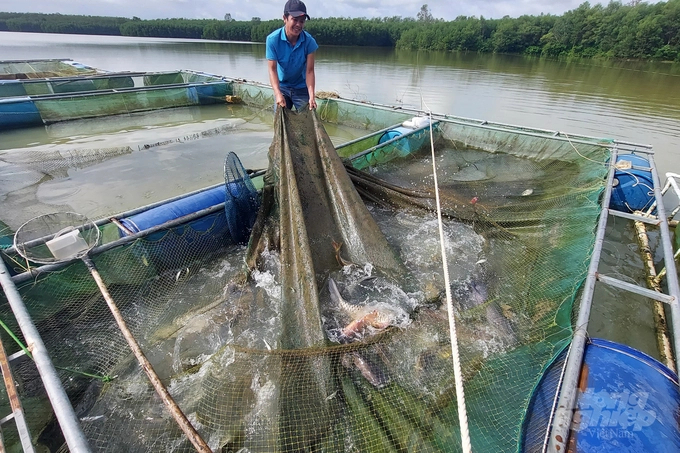
Aquaculture in cages in Quang Tri has not brought into full play its potential and advantages. Photo: Vo Dung.
Specialty aquatic products with high economic value and a stable consumption market will also be put into farming. Production linkages among households raising cages and rafts; Fishery cooperatives associated with processing and consumption enterprises will form.
“If businesses inside and outside the province link up in investment chains to develop fish cage farming in the direction of high technology with large-sized cages… then cage aquaculture will thrive. The aquaculture model combines tours, community tourism routes, discovery tourism, experience, agricultural tourism... will also be a direction in cage aquaculture in the near future in Quang Tri", Mr. Can said.
Learning from experience after a long time of raising fish in cages on the river, some households in Van Tri village have renovated the traditional rectangular cage structure to the shape of a boat's bow with a pointed end. The cage body is drilled with many small holes. When introducing fish, the tip of the cage is directed towards the upstream of the river and firmly fixed in the middle of the river bed. Thanks to the bow shape, the cages reduce the resistance of the water, so there is less damage in the rainy season.
Translated by Hoang Duy
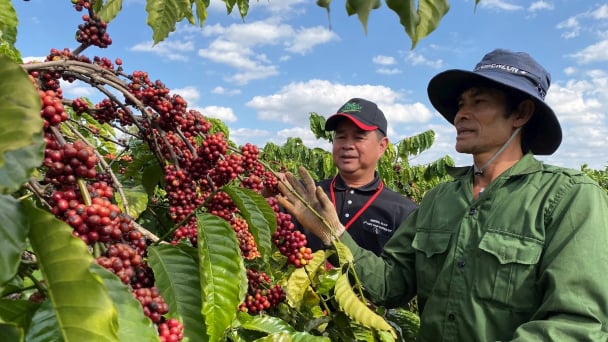
(VAN) Businesses emphasize fairness and equality when integrating social factors into their sustainable development strategies.
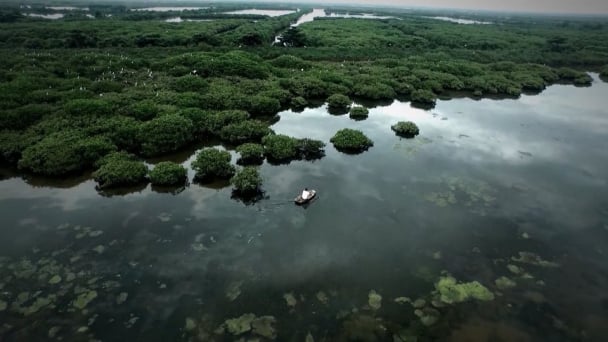
(VAN) French organizations and enterprises propose that Thai Binh province provide potential and long-term cooperation contents related to climate change response and green industrial development.
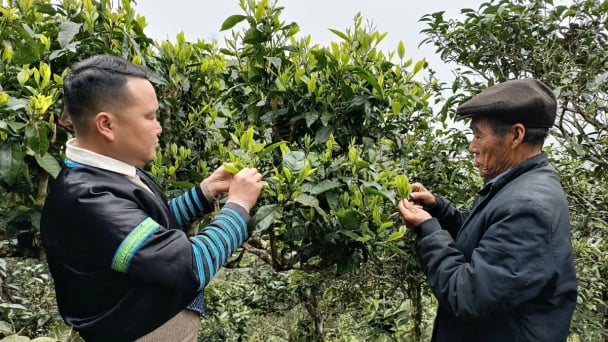
(VAN) Shan Tuyet tea is considered a 'heavenly treasure'. The H'mong people allow the tea to grow naturally, adhering to organic production principles, with the aim of exporting the product.
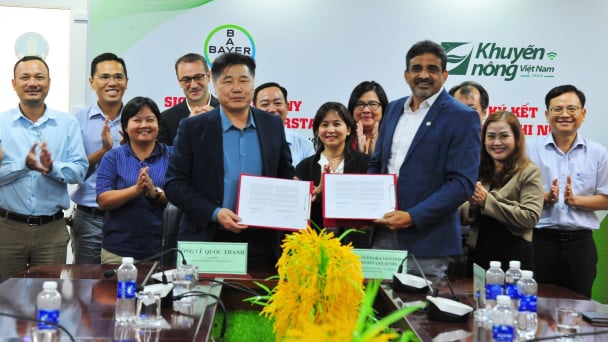
(VAN) Bayer Vietnam and the National Agricultural Extension Center have signed a partnership agreement to expand the development of effective and safe farming models for rice, durian, and coffee.
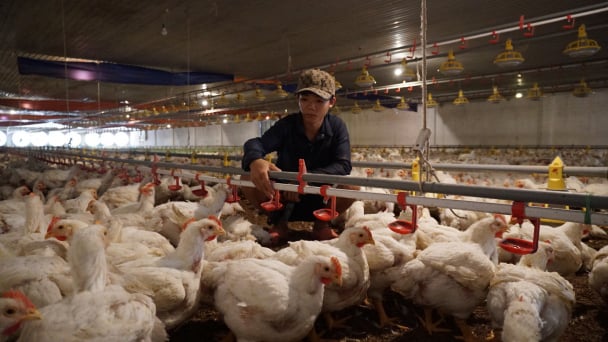
(VAN) Tay Ninh province possesses all the favorable conditions, from natural advantages to geographic location and social harmony, to drive economic development, particularly in attracting investment and advancing modern livestock farming.
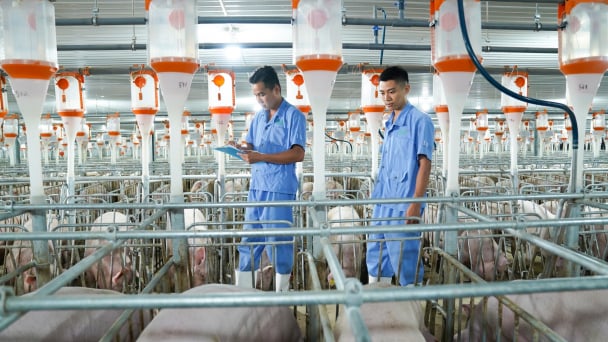
(VAN) Notably, every link in BAF's entire closed livestock value chain Feed - Farm - Food has received international certification.
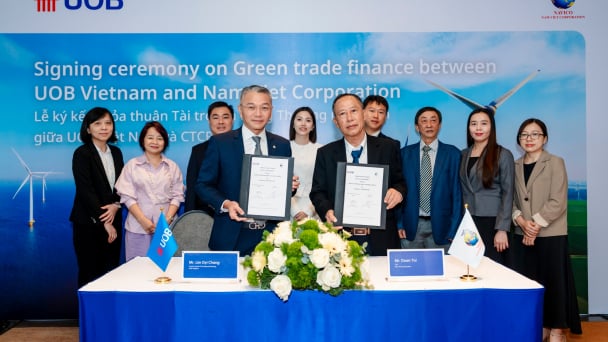
(VAN) UOB Vietnam has recently signed a green credit agreement with NAVICO to develop sustainable aquaculture that meets international standards.